Are you a Quiet Speculation member?
If not, now is a perfect time to join up! Our powerful tools, breaking-news analysis, and exclusive Discord channel will make sure you stay up to date and ahead of the curve.
Dominaria has many solid Modern candidates (and some questionable ones) but none have generated quite as much buzz as Damping Sphere. The hysteria may have died down, but many players are still high on the card. Given the context of the card, this is hardly surprising. However, I am not convinced. There are a number of problems with Sphere that will limit its utility, but there are also opportunities to consider.
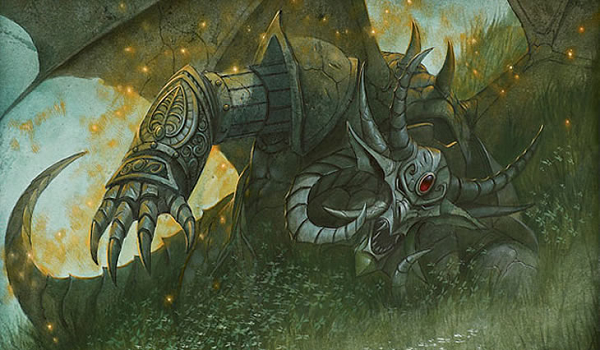
Damping Sphere isn't bad at being a hate card so much as it's not as powerful as it appears. I'll explain why Sphere isn't the universal answer that it has been touted as by detailing where Sphere fits in among hate cards and how it differs from other hate.
What Damping Sphere Does
The hype was understandable, given the strong opinions internet commentators have about Tron and Storm. Damping Sphere was clearly designed to attack those two decks. Its first ability explicitly hoses the Tron lands, and also the Karoo lands in Amulet Titan. Instead of accelerating one's mana, under Sphere, those lands become Wastes. In other words, the card keeps Tron from casting seven-mana bombs on turn three.
 Sphere's second ability hoses Storm, counting all the spells that a player has played in a turn and taxing them accordingly. This ability also targets combo decks that play a critical mass of spells to win, and boasts subtle anti-control applications—many reactive decks like Grixis and Jeskai chain multiple spells a turn to stabilize against agro, and Sphere limits their ability to do so. Snapcaster Mage can be very awkward against Sphere.
Sphere's second ability hoses Storm, counting all the spells that a player has played in a turn and taxing them accordingly. This ability also targets combo decks that play a critical mass of spells to win, and boasts subtle anti-control applications—many reactive decks like Grixis and Jeskai chain multiple spells a turn to stabilize against agro, and Sphere limits their ability to do so. Snapcaster Mage can be very awkward against Sphere.
It is worth noting that Sphere counts every spell that's cast, and not just non-creatures. Generally, Wizards only taxes non-creature decks. Perhaps they were thinking about Legacy Elves? Modern creature-combo decks often rely on Collected Company and Chord of Calling rather than burn through creatures, and Sphere isn't so effective there. It does affect swarm decks like Goblins and Affinity, but might resolve too late against those. It is also worth noting that Sphere is symmetrical, preventing targeted decks like Tron from employing it themselves.
Defending Hate
First of all, I am grateful that Wizards has finally starting printing effective hate cards again. There have been a number of problems in Standard and Modern that could have been avoided with playable answers. Hosers and hate cards serve as safety valves on formats, preventing the narrow set of decks they target from growing too powerful. That's especially so in older formats, where a larger card pool allows for very fast and powerful unfair decks to exist. This is not inherently a bad thing, but too much "busted" drives players away.
With hosers in the picture, these decks have many advantages over the slower fair strategies, but at the cost of being more vulnerable. It is very hard to effectively hate out Jund; Dredge, not so much. Thus, in Modern, hate is critical for fair decks to survive.
Silver Bullets
 A rule I have about sideboard construction is to play as many "I Win" cards as possible. We only have fifteen sideboard slots, I want them to be as impactful as possible; while general answer cards like Negate or Dispel are often good, they're not good enough to beat streamlined decks finely-tuned to do their thing. Therefore, to the extent it is possible, I prefer cards that must be answered or my opponent's deck fails.
A rule I have about sideboard construction is to play as many "I Win" cards as possible. We only have fifteen sideboard slots, I want them to be as impactful as possible; while general answer cards like Negate or Dispel are often good, they're not good enough to beat streamlined decks finely-tuned to do their thing. Therefore, to the extent it is possible, I prefer cards that must be answered or my opponent's deck fails.
These cards, also known as silver bullets, do something that defeats a deck on its own unless answered. Think Rest in Peace against Dredge (and arguably Storm), Shatterstorm against Affinity, Blood Moon against Amulet Titan, or Leyline of Sanctity against 8-Rack. The best hosers are effective against a wide variety of decks, but against some decks, they just win the game. They also require less-common answers to be sideboarded in against them. In other words, they're the ultimate sideboard cards.
Silver bullets are often said to be kill cards, as in they actually end the game against the right deck. This isn't strictly true: it is possible for targeted decks to win through the hate. The best example of this is Dredge hard-casting Prized Amalgams and Bloodghasts when the opponent is too mana constrained to respond. The key to a silver bullet isn't that the game is over, but how it fundamentally alters the game by invalidating the opponent's strategy. Removing Dredge's graveyard shuts off the whole point of the deck. This creates an enormous cliff to climb, but it isn't impossible.
What is Sphere's Purpose?
On paper, Sphere helps fair decks defeat Tron and Storm. There exists a very vocal group that despises both decks, and would throw a parade if they were removed from Modern. It looks like Wizards heard them, and provided them with the next best thing: targeted hate. I specifically think of Jund players re: Tron, a matchup that has always been very difficult for BGx mages. Their strategy had been Thoughtseize into Tarmogoyf into Fulminator Mage, and then hope to race Karn and Wurmcoil Engine, but that's never been so effective; Tron could always find another land to replace the lost one and immediately turn the corner with a colorless bomb. Now, Jund can drop Sphere and get a pseudo Blood Moon on the cheap, keeping Tron off its mana indefinitely. Theoretically, this is a sea change.
Dampened Hopes
However, theory and reality don't always agree. My problem with Damping Sphere is that it's not a silver bullet; just a sideboard card with a potentially powerful effect. Sphere can be overcome without explicitly answering it, so it doesn't end the game by itself. Arguably, it's not even that effective against Tron. Blood Moon has never been a clean kill there, requiring follow-up pressure; otherwise, Tron simply keeps playing lands until it can just cast its spells fairly.
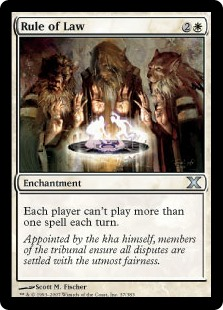 The sad fact is that, unlike with some hate cards, affected decks can brute-force their way through Sphere. Ironworks can partially go off a few turns in a row to build up enough artifacts and draw enough cards so they can win while only playing a few spells; Ad Nauseam only needs to resolve two spells to win. Storm is more strongly affected, but they too can string small Grapeshots together over a few turns.
The sad fact is that, unlike with some hate cards, affected decks can brute-force their way through Sphere. Ironworks can partially go off a few turns in a row to build up enough artifacts and draw enough cards so they can win while only playing a few spells; Ad Nauseam only needs to resolve two spells to win. Storm is more strongly affected, but they too can string small Grapeshots together over a few turns.
There is something to be said for Sphere's universality. It is colorless, and so fits anywhere, and hits multiple decks. This could mean that Sphere frees up sideboard slots in many decks. To me, that sounds like a dangerous argument. Sphere may well be effective in many decks, but not in all all of them, and could even prove counterproductive at times. Also, if Sphere really is "universal," then every deck will be ready to beat it.
Linear Answers
The other problem is that Sphere can be easily answered. Tron has Oblivion Stone and Karn maindeck; Ironworks features Engineered Explosives; etc. This is not necessarily a strike against the artifact, as opponents still need to both have the removal handy and use it against Sphere over something else. The real issue is that targeted decks won't have to bend over backwards to answer Sphere—artifact destruction is readily available in Modern. It's way more fragile than Blood Moon or Stony Silence, as enchantment removal is rarer.
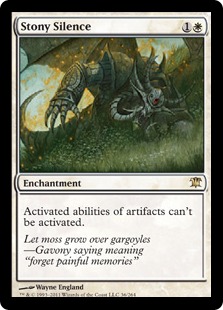 Furthermore, there's the question of Abrade. I wager Abrade's quite good for Tron and Storm even now, considering how effective it is against Humans. I played Storm for a few weeks months ago and wished I had room for a full set in the mainboard, they were so powerful. Currently, Storm just runs Repeal and sometimes Unsubstantiate maindeck, but Abrade is starting to crop up in sideboards and there's chatter about maindecking it. That change will severely hamper Sphere's playability, as some potential homes for Sphere lack other juicy targets for the instant.
Furthermore, there's the question of Abrade. I wager Abrade's quite good for Tron and Storm even now, considering how effective it is against Humans. I played Storm for a few weeks months ago and wished I had room for a full set in the mainboard, they were so powerful. Currently, Storm just runs Repeal and sometimes Unsubstantiate maindeck, but Abrade is starting to crop up in sideboards and there's chatter about maindecking it. That change will severely hamper Sphere's playability, as some potential homes for Sphere lack other juicy targets for the instant.
Wielding the Sphere
None of this means that Damping Sphere is unplayable. Its effect is very powerful and can seriously harm Tron and Storm. It just requires ample support. I don't mean protecting the sphere itself, at least not directly; effectively using a softer hate card like Sphere requires integrating it into a sideboard strategy. Sphere's not a hate card to be smugly slammed down. Rather, it must be presented alongside other threats, forcing opponents to prioritize targets, as the decks that Sphere hits have limited space for answers. The best homes for Sphere are threat-heavy decks that already present problems for the target decks. Sphere isn't a silver bullet, but it can be the nail in the coffin.
For Example's Sake
How does Sphere play out in practice? Consider playing Sphere against Storm. The first spell that is played is unaffected, then each subsequent spell is taxed at an increasing rate. On its face, this means that Storm can never combo off. However, a savvy Storm player will simply wait until they can either ignore or answer the Sphere. Given the opportunity, Storm will durdle with cantrips, build up cost reducers, and then power through. With one Goblin Electromancer in play, the second spell costs its normal rate; with two, it's still discounted. Thus, it is still possible to go off under a 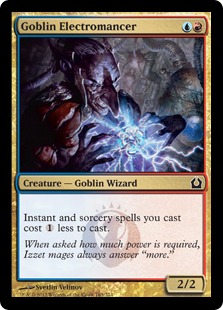 Sphere, and especially with Empty the Warrens. Furthermore, Sphere is symmetrical. Storm can force opponents to play multiple spells in a turn and get hit themselves, leaving Storm a window to remove Sphere and go off.
Sphere, and especially with Empty the Warrens. Furthermore, Sphere is symmetrical. Storm can force opponents to play multiple spells in a turn and get hit themselves, leaving Storm a window to remove Sphere and go off.
What if the Sphere came alongside Thalia, Guardian of Thraben? Thalia supports and amplifies the effect of Sphere while also providing a clock. Because Sphere isn't actually lights-out against anything, players need to actually kill opponents once it's in play. This further crimps Storm's ability to combo off and places the onus on Storm to act. Add in additional creatures to boost the clock, and suddenly Storm is forced to choose between going off and staying alive.
In Comparison
Contrast this with Rest in Peace or Rule of Law. There is no powering through these cards for Storm. It isn't impossible to get a Grapeshot kill without Past in Flames, but doing so is very unlikely. Realistically, Storm must either remove Rest or go for a big Empty. Rule is an even harder kill, as Storm cannot go off at all with it around. It must be removed for Storm to go off in any capacity. If not, the only way for Storm to win is Electromancer beatdown, and if that succeeds Storm wasn't losing anyway. This necessitates sideboarding in Echoing Truth and then finding the card or losing. In other words, Rest and Rule are definitively silver bullets against Storm, while Sphere is not.
Use Tools Wisely
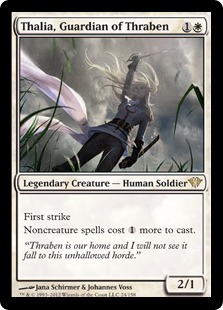 Damping Sphere is never going to be as devastating as a true hoser. Blood Moon and Rule of Law are far more powerful and effective than Sphere. There is something to the argument that Sphere's flexibility makes up for this lack of definitiveness. However, this is weakened by the fact that common answers completely defeat the Sphere. If Sphere forced targeted decks to drastically change their sideboarding to reflect its existence, that would be one thing; however, that isn't the case, and so I cannot recommend the Sphere as a silver bullet. It's a hoser that doesn't actually hose decks, and so most decks should leave it at home.
Damping Sphere is never going to be as devastating as a true hoser. Blood Moon and Rule of Law are far more powerful and effective than Sphere. There is something to the argument that Sphere's flexibility makes up for this lack of definitiveness. However, this is weakened by the fact that common answers completely defeat the Sphere. If Sphere forced targeted decks to drastically change their sideboarding to reflect its existence, that would be one thing; however, that isn't the case, and so I cannot recommend the Sphere as a silver bullet. It's a hoser that doesn't actually hose decks, and so most decks should leave it at home.
Decks that can integrate the effect into a wider strategy, especially aggressive ones, will find the card to be very effective. Control and midrange decks should look elsewhere. Of course, that's just assuming that Damping Sphere is used as intended against Tron and combo decks. The anti-control angle interests me, and warrants more study.




While I agree with most of your points, I honestly don’t think Eggs or Storm is winning THROUGH Sphere at any significant rate. Keep in mind that the win condition of Eggs is Pyrite Spellbomb looping. There’s no way that’s happening 10 times under Sphere. As for Storm, they can go for a couple spells and Empty, but I doubt that chaining together small Grapeshots will get there.
Of course, those decks will be able to win if given enough time. You can’t just slam Sphere and expect to win; you have to have some sort of a clock along with it. This is true of all silver bullet cards though. Eventually Affinity will kill you through Stony Silence, or Dredge will cast 3/3s for 3 under RIP. Amulet will find a second Forest and cast a Titan, or make a huge Ballista. However, while Moon/Sphere/RIP/Stony is on the battlefield, their main avenue to victory is blowing it up, not trying to ignore it. The number of times these decks will actually win with a hoser on the battlefield is very low.
Tron is a little different. Since they can ignore Sphere better than Storm or Eggs can, it’s even more important to have a clock. If Sphere remains unanswered, you can expect it to buy you 3-4 extra turns against them, which should easily be enough to finish them off if you have a ‘goyf on the battlefield. Having a clock has always been the number 1 priority against Tron though; trying to outgrind them never works, which is why you see even control decks flash in Snapcasters early or side in Geist in an attempt to kill them before they inevitably win.
But yes, Damping Sphere is a true hoser. While it is easier to answer than many other hosers, I argue that its effect is just as strong.
I’m not saying it’s easy, but it is definitely possible. While I was testing Sphere against those combos their pilots were able to navigate through the Sphere to victory a number of times without removing Sphere, so it is possible. Once the Ironworks player knew what was up he actually boarded in Emrakul, and if Sphere becomes a problem that kind of shift is very easy for Ironworks and may be a better option in general. As I understand it, the only reason they stopped going for the big creature kill was that graveyard hate was down and so the loop was faster.
I agree that Sphere is a hoser in the artilce, but my argument is that it’s far weaker than you think. It’s the kind of card that looks like a hard lock but isn’t, and this leads players into complacency. I’ve seen too many players mulligan for hate and die because they only see the hate and not the strategy behind it as you state. Because of how easy Sphere is to cast and how many decks it has game against, it will be overused and misunderstood because the barrier it raises isn’t as high as players think.
Complacency + silver bullets is an easy way to lose for sure. As far as Eggs playing Emrakul goes, I’m not an eggs player so I don’t know how big of a commitment it is, but I think it’s mostly only played online because it kills faster. My impression was that playing Emrakul requires some significant deckbuilding concessions, including adding Sanctum of Ugin to the manabase and a decent number of Walking Ballista/Hangarback Walker to the main to find it, which would obviously be a big hit on your redundancy and therefore consistency.
I know they used to do that, but I never understood why. The deck draws so many cards that I can’t imagine you actually need the tutoring. I’m actually surprised that Ballista isn’t included now considering how often it’s a kill on its own.
I agree with your assessment David. The sphere is not the lock people are hyping it to be. However, i still believe that it will have a transformative effect on modern in a more subtle way. I think the ubiquity of the card is what will ultimately produce the most noticeable effect on the format. You touched on this in your write up, but there’s something else to consider there beyond freed up board slots. The hate is so ubiquitous that I just see it sucking the joy out of playing storm and tron at the LGS level. I just can’t imagine being a storm player right now.—can you imagine what a miserable experience that could potentially be? Every round you know that your opponent will be boarding in a powerful hate card specifically designed to hose your deck…Why would you continue to sleeve up storm locally and subject yourself to such a grind?
I just see a whole lot of storm players saying, “Eh, now seems like a good time to try out that esper mill deck I’ve been working on. Or the old Merfolk deck I put away when 8 months ago.” Again, I’m speaking about play at the LGS level, but in a large pool a small stone can cause potentially large ripples. And a lot of spheres are gonna be tossed in the pool.
That is a consideration. The Fear is real and I could see players abandoning affected decks despite everything I said. Which would lead to Sphere seeing less play, thus the decks come back and the cycle repeats.
I feel like this article is basically saying “you can’t just play this and no other disruption or pressure and expect to win,” but in modern, I think if you’re not playing more disruption or pressure there’s no way you’re winning anyways. It’s not a format where you can twiddle your thumbs for very long…